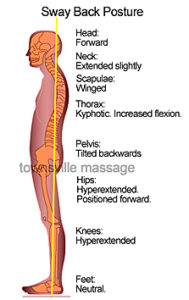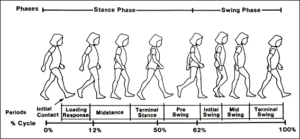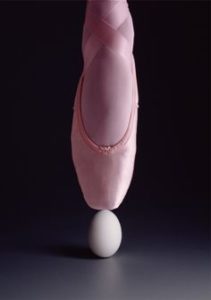As the Psoas Turns

So as the psoas turns:
The anterior hip rotates slightly outward and forward as the pelvis motions in that optimal neutral position. The knees, ankles and feet fall into biomechanical correctness. the butt relaxes and becomes in an optimal position for recruitment, the backs goes on slack and the diaphragm opens to allow a deep breath. How could the same muscle function to allow an inhale of fresh air in conjunction with wild hip shaking dance move. Not many of us really understand much about this undiscovered hunk of a muscle. It’s like a great deep cavernous mysterious structure that is legendary with unsatisfactory theories of dysfunction but ignored for its potential in being a major team player in healing just about every orthopedic ailment.
(that perfect place between pressing your pubic bone forward and sticking your rear to the rear)

So what is the psoas illiacus (The illiacus is the inferior part of the psoas complex)? The upper psoas assists in securing the front of the lower rib cage to the abdomen. The inferior portion gives your hip joint the chance to flex, externally rotate and glide smoothly in weight bearing activities. In tandem it technically can stick your butt to the back (anterior rotation) and facilitate the loudest burp sound (deep diaphragmatic breath). You never hear about “illiacusitis” or “psoas syndrome”. What most people hear about is… – hip impingement, arthritis. TFL/ITB dominance, quad overstrain. Patella tracking problems, chondromalacia, restricted hamstrings, lower back strain/pain and disc dysfunction, plantar fasciitis, metatarsalgia, increased foot pronation, hernia, and bursitis. Also, reduced diaphragmatic breathing can profoundly affect every upper and lower physical/emotional/mental structure along with greatly influencing posture and visceral efficiency. I use the term visceral efficiency as a term to describe how improved diaphragmatic breath improves needed movement of our internal organs along with promoting good pressure differentiation between the thoracic cage, abdomen, and pelvis.

This is an image depicting swayback posture in which the pelvis is in what they refer to as a posterior pelvic rotation. Slouching, sitting, prolonged mouth breathing, tightening the butt encourages this dysfunctional standing position.

I will also briefly touch upon the effects of prolonged sitting on the psoas. The lower psoas overstretches and can become painful (of course even worse with slump sitting – Ha, I bet you just sat up tall). The top part of it, where it pierces through the diaphragm, tightens. So, if you notice that you keep your mouth slightly open to breath normally, collapse easily into your chest and shoulders, experience lower back/hip pain and practically lift your nose to the sky to see in front of you, you might indeed, have dysfunctional psoas. You can probably at this point be able to consider the possible leap as to how a disgruntled psoas could cause headaches, shoulder problems, abdominal/pelvic hernias, neck pain, TMJ, and what the heck, even cause internal problems such as acid reflux and liver dysfunction.
Are you waking up? Are you maybe wanting a better life for your neglected psoas. So what…… so what is the best the best way to address/recruit/ become aware of this deep, obscure, complicated multitasking kinematic masterpiece of a muscle?

Walking!
Simple?

Simple in that most of us can easily walk. But……….
Not so simple in the mere fact that we might all be missing that opportunity in this simple movement to restore our bio mechanical magic of our anatomy with every step we take.

In a brief gait (walk) analysis, it is understood that the lower psoas allows the hip to slightly externally rotate and flex creating an anterior pelvic moment in which the glut max can be in neutral and relaxed state that allows for more power potential. A good example of this is when you squat before you jump. You obviously have greater jump potential with a relaxed butt then a tucked butt. The upper psoas engages as a stabilizer and equalizer, working eccentrically (releasing part of a contraction) to allow deep breath and facilitate optimal length and slack of the lower psoas.

Let’s look at optimal gait when every step is a potentially earth shattering moment of revelation and amazing grace. You first step forward in what professionals refer to as heel strike (contact phase). Biomechanical perfect is with a heel strike slightly on the outside
(lateral) of the heel, the butt would stick out slightly to the back to optimally initiate push off, the diaphragm would open and the transverse abdominus would hug the lower trunk like a comfy corset .
We’ll skip the next part of the step (midstance to preswing), for just a brief moment.

and advance to the fall out part of gait called the swing phase where the leg centers over the inner side of the standing forefoot. This is the fast forward in our gait to where most people feel that moment of instability that inevitably inspires poor compensation.

This is swing phase




Images of poor compensations of knees and ankles in swing phase
Why is this necessary? It’s not; which takes us into rewind. Wow, rewind many times. What is that quick seemingly insignificant part of gait that we try hard to obliterate in exchange for dysfunction.







I’m the mid-stance to pre-swing phase, the moment b/t strike and fall, birth and death, 1st pimple and prostrate problems. Lots of things happen between 2 points in life often that could be experienced as boring and pedestrian, but what if you could have that shattering glass, toe-point shoe egg-balancing moment every single step. It’s the amazing feeling of buoyancy. it’s the ahhhhhh moment. It’s the psoas change in direction between contraction and release.
So hopefully you are not only just barely awake at this point but excited to take a walk like you never had before. Enjoying that sublime moment of letting go into relaxation every step you take.
The secret is…………………
When your walking and in that movement when you are just about to fall forward with one leg, notice where your weight of your foot is? Is it to one side or the other? More front than back? More back then front? Try to find the center, does that challenge your balance? Decrease your leg/ hip pain? Make you feel your breath deepen? Awaken your gentle abdominal corset, make you feel a strong engagement of muscles surrounding the hip joint to keep you perched and sailing easily in biomechanical perfection? You might feel at first that your hips feel like jello (oops don’t tighten your butt cause that takes you away from the center of your foot and honestly your whole body center.
Your in that wonderful moment of midstance to preswing.
Take a few slow steps to discover the psoas in you.
Time stops, wind wisps through your pores

and the muse sounds her most beautiful vibrant sound.
